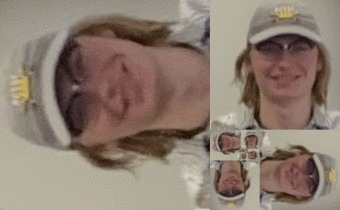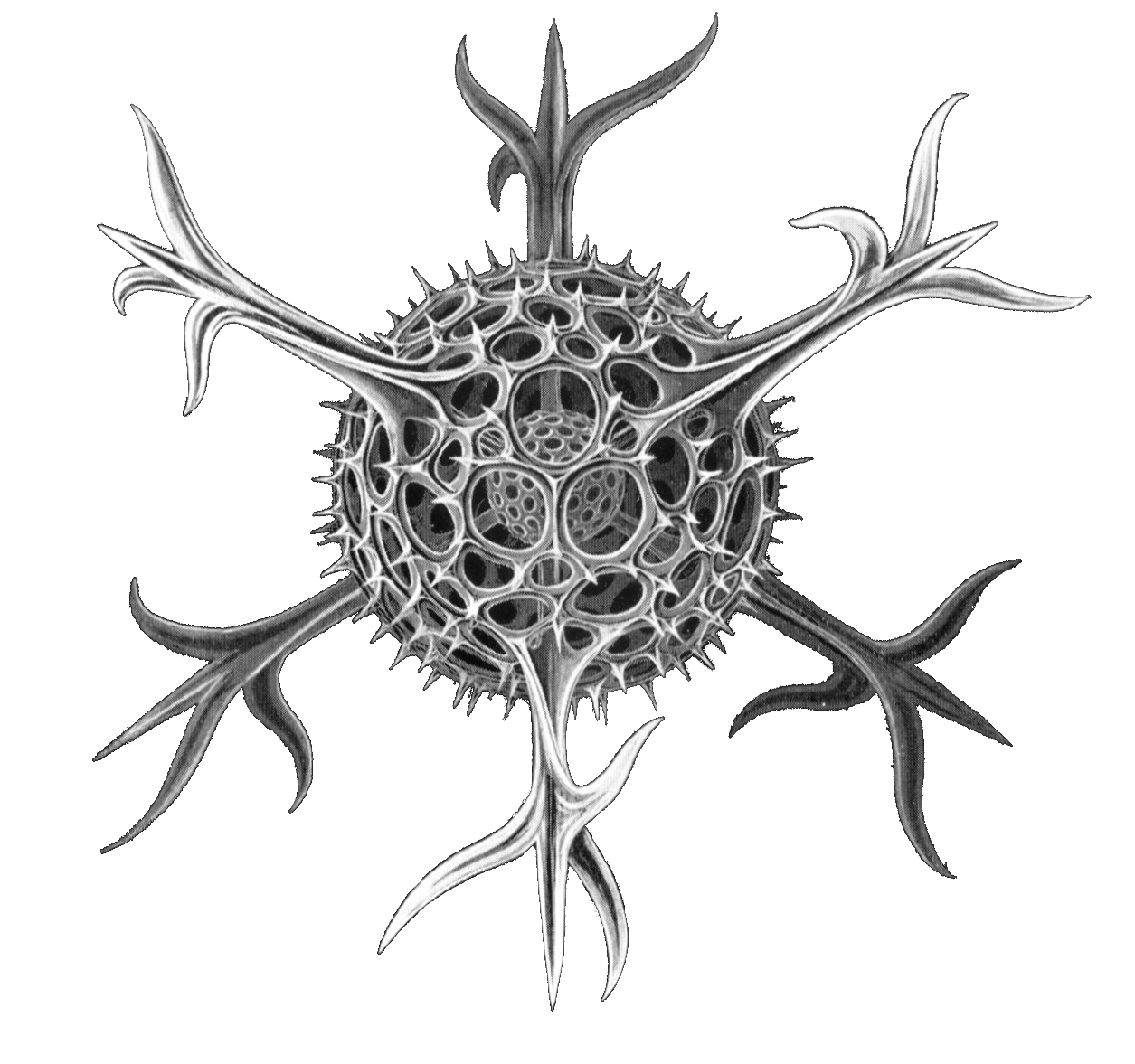- IMath assignment, due Monday; and
- an assignment to turn in on Canvas, due Wednesday (symmetry). More on that in a moment.
- There are also some reading assignments.
- Our next exam is Friday, 4/8.
For those interested in a little extra practice with Egyptian division, here is another example, using the Unit Fraction Table.
The fractal image of Connor, which I created in class on Wednesday,

In particular, however, this is a an example of something called a fractal -- more about those in a week or two....
- First we talked about where have we used symmetry --
- We found Yanghui's triangle had an error in it, by symmetry.
- There's a certain symmetry between Egyptian multiplication and division: you can use the table in reverse;
- There's a type of symmetry in the golden rectangle: within a golden rectangle is found a perfect scale copy of itself (see Connor, above).
- We checked out a video clip of Fred Astaire and
Ginger Rogers. They say Fred Astaire was pretty good (well,
"the best dancer ever"); but Ginger Rogers did everything Fred
did, only backwards (and in heels...).
This is often referred to as a "mirror reflection": a type of symmetry (when Ginger is doing "everything Fred did, only backwards (and in heels...)" (as though it's in the mirror).
I also showed how, at the end, they feature a "failure of symmetry" (if you will), for comic effect. In one case (symmetry of scale -- the "shadows" -- which weren't really shadows, as we see at the end); and then when Fred and Ginger are taking their bows, but can't quite get coordinated. It's the lack of symmetry that's amusing.
- Then on to the two-faced reference:
- First this: Are
humans symmetric? Turns out that we're purported to have a "good
side" and an "evil side"!
(worth a read).
- Then I mentioned how years ago a couple of my
students tried the facial symmetry trick.
- I showed that the two-faced (or "twin") trick is back, on TikTok.
- First this: Are
humans symmetric? Turns out that we're purported to have a "good
side" and an "evil side"!
- Indeed, humans possess bilateral symmetry: we have mirrored
sides. At least to external appearances. Inside, of course, some of our
organs are on one side or the other. That's an interesting twist! Here
are some other creatures -- which ones also have bilateral symmetry?
What other kinds of symmetry do you see?
Symmetry
of lifeforms on Earth
- I passed around a book by Haeckel, in which I found the following
interesting bits:
"Our sensory organs and central nervous system are, as the result of evolutionary development, genetically programmed to recognize regularity, and hence order."
- Which "face" did babies focus on?
- Composite
versus designed faces
- "In experiments, test subjects found computer-generated composite (averaged) images of faces more attractive than the many individual faces, from which the composite images were generated." (p. 23)
- "[test subjects] developed a face which strong resembled the average face of the population in which they lived, but which was characterized by more child-like features."
- Haeckel was an artist and a scientist, and his most famous work
concerned the radiolaria (tiny creatures living at the bottom
of the sea):

- Finally, we checked out this
worthy handout, or the four
pages of it that featured your homework.
It covers, in particular, two kinds of symmetry that are very important: rotational and reflective.
We went over the definitions, and then I turned the students loose to work on the homework for the last ten or fifteen minutes.
- We did discuss the following questions, however:
- What is the most symmetric rectangle? (the square -- yet somehow the golden rectangle was considered more beautiful! Symmetry must not be everything....).
- We had a look at the regular polygons (and I noted that, in one of your readings, the regularity -- and our ability to detect it -- is one of the thing that distinguishes us from other creatures).
- How many regular polygons are there? (infinitely many)
- What kinds of symmetry do they possess?
- Which regular polygons can be used exclusively to "tile" the plane, like a bathroom floor? (triangle, square, hexagon).